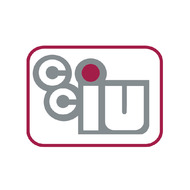
(View Complete Item Description)
This course promotes clear and effective communication by sharpening critical thinking and writing skills. The first unit is designed to change the way in which students think about writing--as a conversation rather than a solitary act. The second unit focuses on academic writing and explores the PWR-Writing or Power-Writing Method (PWR Pre-Write, Write, Revise). The remaining units will focus on the minutiae of good writing practices, from style to citation methodology. Upon successful completion of this course, the student will be able to: Demonstrate mastery of principles of grammar, usage, mechanics, and sentence structure. Identify the thesis in another individual's essay. Develop a thesis statement, structure it in an introductory paragraph, and support it with the body of the essay. Organize ideas logically within an essay, deploying adequate transitional devices to ensure coherence, flow, and focus. Differentiate between rhetorical strategies and write with an awareness of rhetorical technique and audience. Differentiate between tones and write with an awareness of how tone affects the audience's experience. Demonstrate critical and analytical thinking for reading and writing purposes. Quote, paraphrase, and document the work of others. Write sentences that vary in length and structure. (English 001)
Material Type:
Assessment,
Full Course,
Lecture,
Reading,
Syllabus




















